| <<
Jan 26| HISTORY
“4” “2”DAY
|Jan 28
>> Events, deaths, births, of JAN 27 [For Jan 27 Julian go to Gregorian date: 1583~1699: Feb 06 — 1700s: Feb 07 — 1800s: Feb 08 — 1900~2099: Feb09] |
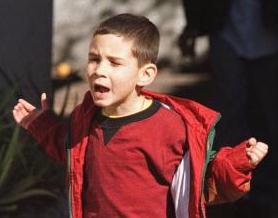 On
a 27 January: On
a 27 January: 2000 In US President Clinton's last State of the Union Address, he proposes a $350 billion tax cut, big spending increases for schools and health care and photo ID licenses for handgun purchases. 2000 Shipwreck orphaned survivor, Elián González, 6, [photo >] observed by a large contingent of the press camped across the street, shouts at the family dogs for inteferring with his ball playing, at the home of his great uncle Lazaro Gonzalez. Lazaro and Elian's cousin, Marisleysis Gonzalez, who are taken care of Elian in their Miami home, flie to Washington today to try and talk with those who might help Elian remain in the United States rather than be sent to his father in Cuba. |
| ^
1999 (Wednesday) Clinton impeachment trial in US Senate is far
from over. (1) In the first formal sign of how President Bill Clinton's impeachment trial may end, the Senate votes 56-44 to reject a move to dismiss the charges of perjury and obstruction of justice against Clinton. While Democrats lose the largely party-line vote, it does indicate the Senate may most likely fail to muster the 67 votes necessary to remove the president from office. Republicans, as expected, muster all of their 10-vote majority in the Senate to defeat the Democratic attempt to dismiss the trial and approve the House managers' request for witness depositions. Democratic Sen. Russ Feingold of Wisconsin is the only Democrat senator to cross party lines, voting with the Republicans on the motion. Feingold does not talk with reporters after the vote, but issues a three-page statement. "My view, as of this moment, is that to dismiss this case would be in appearance and in fact improperly short-circuiting this trial. I simply cannot say that the House managers cannot prevail regardless of what witness might plausibly testify and regardless of what persuasive arguments might be offered," Feingold writes. "I want to be clear that my vote against the motion does not mean that I am leaning in favor of a final vote to convict the president. I am not." Another glimpse of statesmanship (2) But the trial is far from over. In a second vote, the Senate approves, also by a 56-44 margin, the Republican House prosecutors' request to allow witness depositions in the impeachment trial. That vote paves the way for Senate subpoenas of Monica Lewinsky, Vernon Jordan and Sidney Blumenthal. Democratic Sen. Russ Feingold of Wisconsin again crosses party lines to vote with the Republicans on the motion to hear witnesses. Maryland Democratic Sen. Barbara Mikulski returns from a bout with "the flu" in time for the vote on both motions. She votes against, then in favor, of dismissing the case against Clinton, but when that motion fails, crosses over and votes in favor of witness depositions. The Senate resolution authorizing depositions also includes a timetable of events: Depositions would take place over 2 days in private, presided over by two senators, and would be videotaped and transcribed. The depositions would run approximately six hours each, with the questioning equally divided between House managers (the prosecution) and White House lawyers (the defense). The tapes and transcripts would then be distributed to senators, who would then vote on whether to follow up depositions with live testimony. The House managers announce that Rep. Ed Bryant (R-Tennessee) will depose Lewinsky, Rep. Asa Hutchinson (R-Arkansas) will depose Jordan and Rep. James Rogan (R-California) will depose Blumenthal. Under this scenario, the trial would end Feb. 5 or 6 with final votes on the articles of impeachment. (3) After the vote, the Senate recesses upon the call of the chair, so that Senate Majority Leader Trent Lott (R-Mississippi) and Minority Leader Tom Daschle (D-South Dakota) could try to work out procedures for the witness depositions. Daschle says he is optimistic that he and Lott could work out a compromise today on how to proceed. But shortly before 5 p.m. ET, Lott returns to the Senate floor, telling Chief Justice William Rehnquist they had not reached an agreement and requesting the trial be adjourned for the day. Three stooges (4) A group of about a half dozen Republicans meet to talk about producing "findings of fact" to make sure the record reflects a finding of fault against the president if he is not convicted on the articles of impeachment. Convicting and removing Clinton from office would require two-thirds support, or 67 votes, which most observers say are unlikely to materialize. Republicans fear that if both impeachment articles are voted down, the White House will claim the president has been exonerated. To prevent that, the Republicans want to get on record some finding of fault. Sen. Olympia Snowe (R-Maine), who co-chairs the ad hoc group, says the group of six Republicans senators charged with looking into the "finding of fact" option in the impeachment trial will present a proposal to Lott. Snowe says the "finding of fact" would come up as a motion prior to votes on the articles of impeachment. The goal, says Snowe, is for the Senate to accept the facts as charged in the articles of impeachment, without drawing conclusions on those facts. Snowe says the motion would not include any mention of conviction, and would not get into specifics on the language. White House Press Secretary Joe Lockhart calls the effort "constitutional gymnastics." (5) Paula Jones has no objection to a mediator working to resolve a dispute over how the $850'000 settlement from President Clinton is divided among her lawyers, according to court papers. After lawyers for Clinton and Jones agreed on the settlement, two lawyers who handled the earlier stages of her case, Joseph Cammarata and Gilbert Davis, filed a claim for $875,000. Jones' lawyers who had the case when it was thrown out and subsequently settled — the Dallas firm of Radar, Campbell, Fisher and Pyke — filed court papers earlier this month asking a federal judge to refer their dispute to a magistrate to mediate how they should divide the $850'000. Afraid she hears the White House |
| 1998 US President Clinton's State
of the Union Address. 1997 National Semiconductor agreed to sell its Fairchild Semiconductor business to the unit's management. The separation of the two companies would allow National Semi to focus on expensive custom chips instead of high-volume, low-cost chips, which Fairchild specialized in. 1996 Soldiers seized control of Niger's government. 1994 Romanian social-democrats form government with anti-Semites 1992 Presidential candidate Bill Clinton (D) and Genifer Flowers accuse each other of lying over her assertion they had a 12-year affair
1990 Dissolution of Polish Communist party 1989 German war criminals Fischer and Austrian der Fünten freed 1988 Senate Judiciary Committee unanimously approves nomination of Judge Anthony M Kennedy to US Supreme Court 1987 State of the Union Address by US President Ronald Reagan.. 1985 The Cola Wars Meet the Cold War On this day, the Cold War couldn’t stop one of the stalwarts of capitalism, Coca-Cola, from setting up shop behind the iron curtain. On 27 January 1985, Coke announced plans to sell its all-American soft drinks in the Soviet Union. With the move, Coke belatedly matched Pepsico, who, twelve years earlier, had begun distributing its colas in the USS.R. 1983 World's longest subaqueous tunnel (53.90 km) opens, Honshu-Hokkaido. 1982 Mauno Koivisto, 58, is installed as President of Finland — Valtiovarainministerinä, Suomen Pankin pääjohtajana ja pääministerinä toiminut Mauno Koivisto saavutti laajan kansansuosion yli puoluerajojen ja nousi sen varassa tasavallan presidentiksi Urho Kekkosen presidenttikauden keskeydyttyä 1982. Koivisto joutui vastaamaan haasteisiin, joita Urho Kekkosen pitkä presidenttikausi oli seuraajalleen luonut. Ulkopolitiikassa Koivisto jatkoi Kekkosen viitoittamaa linjaa varovaista puolueettomuuspolitiikkaa noudattaen. Koiviston sisäpolitiikkaa leimasi muun muassa presidentin valtaoikeuksien rajoittaminen. 1981 President Ronald Reagan greets the 52 former US hostages released by Iran. 1977 President Carter pardons most Vietnam War draft evaders (10'000) 1977 The Vatican reaffirmed the Roman Catholic Church's constant tradition of an exclusively male priesthood. 1976 Morocco-Algeria battles in Western Sahara. |
1967 More than 60 nations signed a treaty banning nuclear weapons in space. 1964 Margaret Chase Smith (Senator-R-ME) tries for Republican Presidential bid 1958 Ferenc Münnich follows Kádár as premier of Hungary
|
1948 First tape recorder sold
1943 first US air attack on Germany (Wilhelmshafen)
1941 Peruvian agent Rivera-Schreibér warns of Japanese assault on Pearl Harbor. 1934 French government of Chautemps falls (Stavisky Affair) 1926 US Senate agrees to join World Court. 1924 Lenin placed in Mausoleum in Red Square. 1915 US Marines occupy Haiti. |
1897 British troops occupy Bida Gold Coast (Ghana) 1889 Le général Boulanger est élu député à Paris par 245'236 suffrages contre 162'875 à son adversaire, le radical Jacques. Mais en dépit de ce plébiscite et sur les conseils de sa maîtresse Mme de Bonnemain, il refuse de marcher sur l'Elysée. 1886 first British government of Salisbury resigns 1870 After accepting 15th amendment, Virginia is readmitted to Union 1870 Manitoba and Northwest Territories incorporated 1864 1864 Engagement of Fair Gardens (Kelly's Ford), Tennessee 1864 Civil War skirmish at Kelly's Ford VA 1794 En France, la Convention décide que tous les actes publics rédigés jusqu'alors en latin doivent dorénavant être rédigés en français. 1736 Stanislaw I abdicates as king of Poland, receiving as compensation (after the so-called War of Polish Succession) the duchy of Lorraine. In 1733, Stanislaw I, seen as a symbol of Poland's independence and supported by France (his daughter married Louis XV), was elected king of Poland for the second time. The counter-election of Augustus III followed, and Russian troops drove Stanislaw out of the country (déjà vu all over again). 1710 Czar Peter the Great sets first Russian state budget 1687 A la lecture faite à l'Académie française du Siècle de Louis le Grand par Charles Perrault, le moderne. Celle-ci est vivement contesté par Boileau, l'ancien. Cette bataille durera plus de quatre ans. 1671 Landing at Panama City by Sir Henry Morgan, Welsh buccaneer, most famous of the adventurers who plundered Spain's Caribbean colonies during the late 17th century. Operating with the unofficial support of the English government, he undermined Spanish authority in the West Indies.
|
1593 Vatican opens 7 year trial against scholar
Giordano Bruno
|
^
Deaths
which occurred on a 27 January: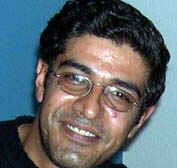 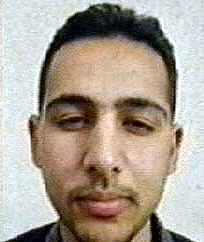 2004
CNN Iraqi employees Duraid Isa Mohammed, 27 [< photo],
a translator and producer, and Yasser Khatab, 25 [photo >],
a driver, shot in Iraq by a terrorist firing an AK-47 through the sunroof
of a car, as a 2-car CNN convoy was approaching Baghdad on its way back
from Hillah. 2004
CNN Iraqi employees Duraid Isa Mohammed, 27 [< photo],
a translator and producer, and Yasser Khatab, 25 [photo >],
a driver, shot in Iraq by a terrorist firing an AK-47 through the sunroof
of a car, as a 2-car CNN convoy was approaching Baghdad on its way back
from Hillah.2004 Three US soldiers by a roadside bomb at 20:00 (17:00 UT), near Iskandariyah, Iraq. Three other US soldiers are wounded. 2004 Three US paratroopers; and Iraqi civilians Hadi Abd Shehab, the director of agriculture of Khaldiyah, and Hamid Nayef, a taxi driver; in Khaldiyah, Iraq, after a roadside bomb hits a vehicle of a passing convoy of the US 82nd Airborne Division, at 13:00 (10:00 UT), a second roadside bomb hits a vehicle of arriving reinforcements, and US soldiers fire erratically. Nayef, who was driving by at the time of the explosion, is shot in the head and face. Shehab is shot in the abdomen while standing in his nearby office. One US paratrooper and three Iraqis are wounded. 2004 Three Iraqi policemen, shot by terrorists outside a police station in Ramadi, Iraq. 2004 An Iraqi policeman, shot by terrorists as he was guarding the headquarters of Polish occupation troops in Karbala, Iraq. 2004 A Canadian soldier, an Afghan civilian, and a Taliban suicide bomber who throws himself in front of a Canadian military vehicle in Kabul, Afghanistan. Three Canadian soldiers and 8 Afghan civilians are wounded. 2002 More than 1000 victims of a long series of bomb, rocket, and shell explosions started by an accidental (or political sabotage?) fire at the Ikeja military armory in Lagos, Nigeria, near a crowded barracks and a residential area. Many victims die in the ensuing panic, drowned in the nearby Oke-Afa and Pako canals, or trampled.  2002
Pinhas Tokatli, 81 [photo >], Israeli; and Wafa' Idris,
27, Palestinian female suicide bomber in downtown Jerusalem,
just after midday. At least 113 persons are injured, most only lightly.
Idris was a non-practicing Muslim, a divorced paramedic from the Amari
refugee camp in Ramallah. She had attended Palestinian victims of Israeli
shooting and sometimes hit by rubber bullets while doing so. The al-Aqsa
intifada (started in September 2000 after a Sharon provocation) body count
is now at least 821 Palestinians and 248 Israelis. 2002
Pinhas Tokatli, 81 [photo >], Israeli; and Wafa' Idris,
27, Palestinian female suicide bomber in downtown Jerusalem,
just after midday. At least 113 persons are injured, most only lightly.
Idris was a non-practicing Muslim, a divorced paramedic from the Amari
refugee camp in Ramallah. She had attended Palestinian victims of Israeli
shooting and sometimes hit by rubber bullets while doing so. The al-Aqsa
intifada (started in September 2000 after a Sharon provocation) body count
is now at least 821 Palestinians and 248 Israelis.2002: General Mikhail Rudchenko, Major-General Nikolai Goridov, and 12 other Russian Interior Ministry troopers, including 3 colonels, as their Mi-8 helicopter crashes near Shchelkovskaya, northwest of Grozny, Chechnya. Rudchenko was a deputy interior minister who headed Interior Ministry forces for the Caucasus region. Goridov was deputy commander-in-chief of Russian interior forces. 2001 Oklahoma State basketball players Nate Fleming and Daniel Lawson, student manager Jared Weiberg, sports information employee Will Hancock, OK State director of basketball Pat Noyes, trainer Brian Luinstra, broadcast engineer Kendall Durfey, OK City broadcaster Bill Teegins, pilot Denver Mills, and co-pilot Bjorn Falistrom, as their Beechcraft King Air 200 Catpass crashes in a snowstorm in Byers, Colorado, about 70 km east of Denver, after taking off from Jefferson County Airport. They were returning from a game in Boulder. 2001 At least 15 Civic United Front demonstrators and 1 policeman, in Zanzibar (10 in Zanzibar town, and 5 in Pemba), as the government of the Chama Cha Mapinduzi party cracks down with massive arrests of the CUF followers, who protest what they say are the rigged elections of three months earlier.
1996 Two nuns of four stabbed and beaten in their Waterville, Maine, convent, by Mark Bechard, later found not criminally responsible, because of mental illness. 1989 Sir Thomas Sopwith, English WW1 aircraft designer born on 18 January 1888. His Sopwith Aviation Company produced the Sopwith Pup and it famous successor the Sopwith F1 Camel, which, from July 1917, when it reached the Front, until the 11 November 1918 Armistice, downed 1294 enemy planes. 1978 Evelyn Miroth and Daniel Meredith, murdered by Richard Chase, 28, the "Dracula Killer," who, some say, suffered a medical condition causing him to need to drink blood, which they identify as porphyria. 1975 Four persons by terrorist bomb of Puerto Rican nationalists in a bar on Wall Street, New York City. Some 60 persons are injured. 1972 Richard Courant, 84, German/US mathematician. 1969 9 Jews publicly executed in Damascus Syria 1969 14 spies hung in Baghdad 1967 Alphonse Juin, 78, French marshal
|
1927 Luigi Pastega, Italian artist born on 18 November 1858. 1912 Charles Schreyvogel, US artist born on 04 January 1861. 1901 Giuseppe Verdi, 87, Italian composer (Rigoletto/Traviata/Aïda/Nabucco >) 1890 Anton Hartinger, Austrian artist born on 13 June 1806. 1864 Leo van Klenze, dies at age 79 about one month before his 20th birthday. He was a German artist born on 29 February 1784. 1860 János Bolyai, 57, Hungarian mathematician born on 15 December 1802. 1851 John James Audubon, 65, naturalist and artist famous for his drawings and paintings of North American birds. — MORE ON AUDUBON AT ART “4” JANUARY with links to images. 1836 Ludwig Philipp Strack, German artist born in 1761. 1823 Charles Hutton, English mathematician born on 14 August 1737. 1811 Jean-Baptiste Huet, French artist born on 15 October 1735. — more with links to images. 1738 Alessandro Marchesini, Italian painter born in 1664. — more with link to an image. 1747 Willem van Mieris, Dutch painter born on 03 June 1662. — MORE ON VAN MIERIS AT ART “4” JANUARY with links to images. 1669 Gaspar de Crayer, Flemish artist born on 18 November 1584. — MORE ON DE CRAYER AT ART “4” JANUARY with links to images. 1667 Gregorius Saint-Vincent, Belgian Jesuit priest mathematician born on 08 September 1584. 1651 Abraham Bloemaert, influential Dutch Mannerist painter and engraver who born on 25 December 1564. — MORE ON BLOEMAERT AT ART “4” JANUARY with links to images. 0847 Pope (844-47) Sergius II 0672 Pope (657-72) Saint Vitalian 0098 Marius Cocceius Nerva, 67, Emperor of Rome (96-98) |
Births
which occurred on a 27 January:
1918 Tarzan of the Apes, first Tarzan film, released, a silent movie, based on Edgar Rice Burroughs' novel. 1916 "Spartacus Letters" of Communist party first published in Berlin 1908 William Randolph Hearst Jr newspaper publisher (newspapers: San Francisco Examiner, magazines: Cosmopolitan; Hearst Broadcasting, A&E Television Networks, The History Channel) 1900 Hyman G Rickover, nuclear engineer, US Admiral (father of modern nuclear navy, directed development of the Nautilus, the first nuclear reactor-powered submarine). He died on 08 July 1986. 1892 Ch'ing-ling Soong, Chinese politician who died on 29 May 1981. 1891 (15 January Julian) Ilya Grigoryevich Ehrenburg, in Kiev, prolific writer and journalist, one of the most effective Soviet spokesmen to the Western world. He died on 31 August in Moscow 1888 National Geographic Society organizes (Washington DC) |
1872 Learned Hand, Albany NY, Chief judge (US Court of Appeals). He died on 18 August 1961. 1871 Samuel John Peploe, Scottish painter who died on 11 October 1935. — more with links to images. 1859 Kaiser Wilhelm II Potsdam, German emperor (1888-1918) 1851 Jan van Chelminski, Polish artist who died in 1925.
1824 Jozef Israëls, Dutch painter and etcher specialized in Landscapes. — MORE ON ISRAËLS AT ART “4” JANUARY with links to images. 1823 Edouard-Victoire-Antoine Lalo, France, composer notable for the clarity of his orchestration, who died on 22 April 1892 (Symphonie Espagnole) 1813 Johann Jakob Frey, Swiss artist who died on 30 September 1865. — more 1808 David Friedrich Strauss, German-Protestant philosopher and theologian who died on 08 February 1874. 1805 Samuel Palmer, English painter who died on 24 May 1881. — more with links to images. 1756 Wolfgang Amadeus Mozart, Salzburg, Austria, musical prodigy and composer who died on 05 December 1791. (Don Giovanni, The Marriage of Figaro, Symphony #41, Requiem, A Little Night Music) 1679 Jean-François de Troy, French painter and tapestry designer who died on 26 January 1752. — more with links to images. 1645 Michiel van Musscher, Dutch artist who died on 20 June 1705. 1630 Job Berckheyde, Dutch painter who died on 23 November 1693. — MORE ON BERCKHEYDE AT ART “4” JANUARY with links to images. 1556 Abbas I "the Great," shah of Persia (1587-1629) |
|||||||||
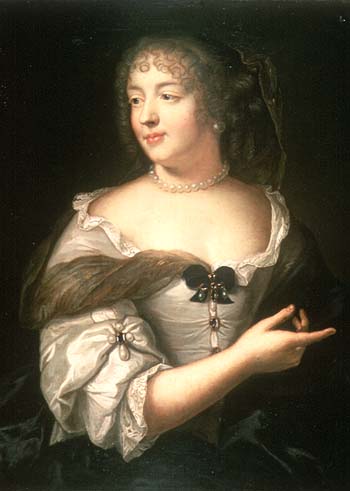 1669
Madame de Sévigné commence à écrire.
1669
Madame de Sévigné commence à écrire.  Dante was born to a family with noble ancestry that had fallen in
fortunes. He began writing poetry in his teens and received encouragement
from established poets, to whom he sent sonnets as a young man.
Dante was born to a family with noble ancestry that had fallen in
fortunes. He began writing poetry in his teens and received encouragement
from established poets, to whom he sent sonnets as a young man.
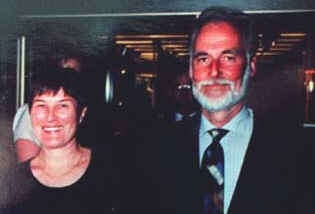 2001
2001
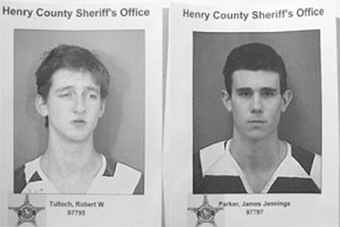 When the interview is finished, Parker thinks that they are going
to leave and abort their criminal plan. But Zantop tells them that
they should be better prepared for the next survey and says that
he has a friend who could help them with research. When Zantop opens
his wallet to give the boys the friend's business card, a wad of
cash pokes out, and Tulloch abruptly reaches into a backpack and
grabs one of the two 30-cm-long commando knives the boys had bought
over the Internet. He lunges at Zantop, stabbing him repeatedly
in the chest. Susanne Zantop comes running when she hears her husband's
screams. At Tulloch's direction, Parker slits her throat. The pair
flees with Zantop's wallet, which has what they believe are PIN
numbers for ATM cards. But they decide that using them would be
too risky.
When the interview is finished, Parker thinks that they are going
to leave and abort their criminal plan. But Zantop tells them that
they should be better prepared for the next survey and says that
he has a friend who could help them with research. When Zantop opens
his wallet to give the boys the friend's business card, a wad of
cash pokes out, and Tulloch abruptly reaches into a backpack and
grabs one of the two 30-cm-long commando knives the boys had bought
over the Internet. He lunges at Zantop, stabbing him repeatedly
in the chest. Susanne Zantop comes running when she hears her husband's
screams. At Tulloch's direction, Parker slits her throat. The pair
flees with Zantop's wallet, which has what they believe are PIN
numbers for ATM cards. But they decide that using them would be
too risky.